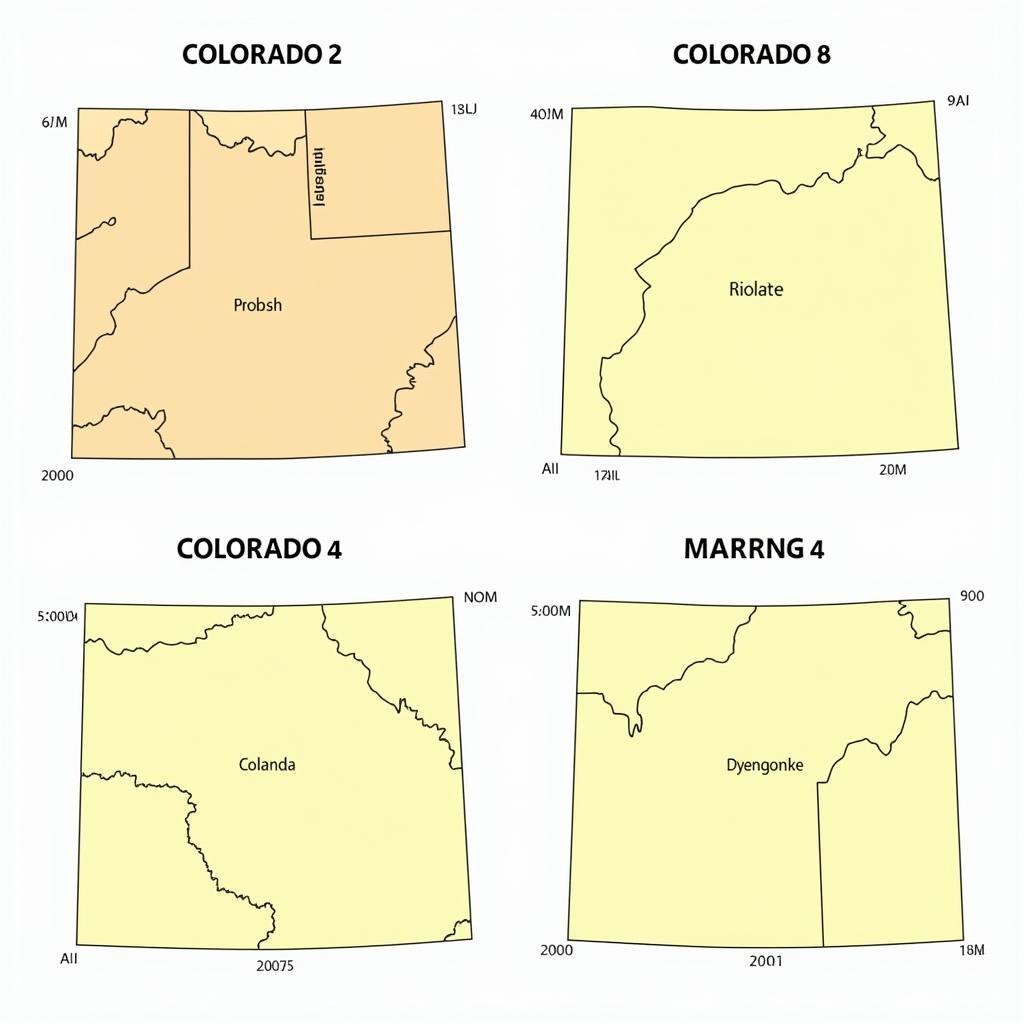Colorado is often described as a rectangle, and a quick glance at a map might confirm this impression. But is Colorado a perfect rectangle? The answer is more nuanced than a simple yes or no. This article delves into the specifics of Colorado’s borders, exploring the historical and geographical factors that shaped its distinctive form.
Debunking the Myth of the Perfect Rectangle
While Colorado appears rectangular, it’s not a true geometric rectangle. A perfect rectangle has four 90-degree angles and perfectly straight sides. Colorado’s borders, however, are defined by lines of longitude and latitude, which converge as they move towards the poles. This convergence leads to slight deviations from perfect right angles at the state’s corners.
Understanding Colorado’s Boundaries: Longitude and Latitude
Colorado’s boundaries were established using lines of longitude and latitude, a common practice during westward expansion in the United States. The state is defined by 37°N to 41°N latitude and 102°03’W to 109°03’W longitude. This method, while practical for surveying, results in the slight curvature of the north and south borders. These borders are not perfectly parallel, causing the eastern and western boundaries to be slightly closer together in the north than in the south.
How Close is Colorado to a Perfect Rectangle?
Despite not being perfectly rectangular, Colorado is remarkably close. The deviations from true right angles are minimal, and for most practical purposes, the rectangular representation is sufficient. The difference in width between the northern and southern borders is only approximately 27 miles across a span of 276 miles (east to west), a relatively small discrepancy.
Why the Rectangular Perception?
The perception of Colorado as a rectangle is reinforced by its portrayal on maps. Most maps use projections that distort the Earth’s spherical surface onto a flat plane. These projections often exaggerate the rectangular appearance of states like Colorado, further solidifying the common misconception.
 Colorado Map Projection Comparison
Colorado Map Projection Comparison
Is Colorado a Rectangle? The Historical Context
The establishment of Colorado’s borders in the 1800s was primarily driven by practical considerations, not geometric precision. The use of longitude and latitude lines provided a straightforward method for defining territories and resolving boundary disputes during a period of rapid westward expansion. The slight imperfections in the resulting shape were considered negligible.
The Impact of Colorado’s Shape
While the slight deviations from a perfect rectangle might seem insignificant, they do have implications for surveying and land management. Precise measurements and calculations must account for the curvature of the Earth and the converging lines of longitude.
Why is Colorado’s Shape a Frequent Topic of Discussion?
The question “Is Colorado a rectangle?” often arises out of curiosity and a desire for precision. It highlights the difference between idealized geometric shapes and the complexities of real-world geography. It’s a reminder that even seemingly simple shapes can hold hidden nuances.
what mountain ranges are in colorado
Comparing Colorado to Other States
Several other western states, such as Wyoming and Utah, also have boundaries defined by longitude and latitude lines, resulting in similar near-rectangular shapes. Understanding how these boundaries were established provides insight into the historical context of westward expansion and the challenges of mapping and surveying vast territories.
Conclusion: Beyond the Rectangle – Appreciating Colorado’s Unique Geography
While Colorado is not a perfect rectangle, its near-rectangular shape is a defining characteristic. Understanding the factors that shaped its borders offers a deeper appreciation for the state’s unique geography and history. So, the next time you see a map of Colorado, remember that while it may look like a rectangle, its story is far more intricate.
FAQ
- What are Colorado’s exact boundaries? Colorado is bounded by 37°N to 41°N latitude and 102°03’W to 109°03’W longitude.
- Why is Colorado not a perfect rectangle? The convergence of longitude lines towards the poles causes the northern and southern borders to be slightly curved.
- How was Colorado’s shape determined? The use of longitude and latitude lines provided a practical method for defining territories during westward expansion.
- Does Colorado’s shape have any practical implications? Yes, it requires precise measurements in surveying and land management.
- Are other states shaped similarly to Colorado? Yes, several western states, such as Wyoming and Utah, also have near-rectangular shapes due to their boundaries being defined by longitude and latitude.
- Why is the question of Colorado’s shape a common topic? It highlights the difference between idealized shapes and the complexities of real-world geography.
- Where can I find more information about Colorado’s geography? Numerous resources are available online and in libraries.
Need help with your home design and color choices? Contact Color Box Hanoi at 0373298888, email us at [email protected] or visit our showroom at 86 Cau Giay, Hanoi. We have a 24/7 customer service team ready to assist you.

